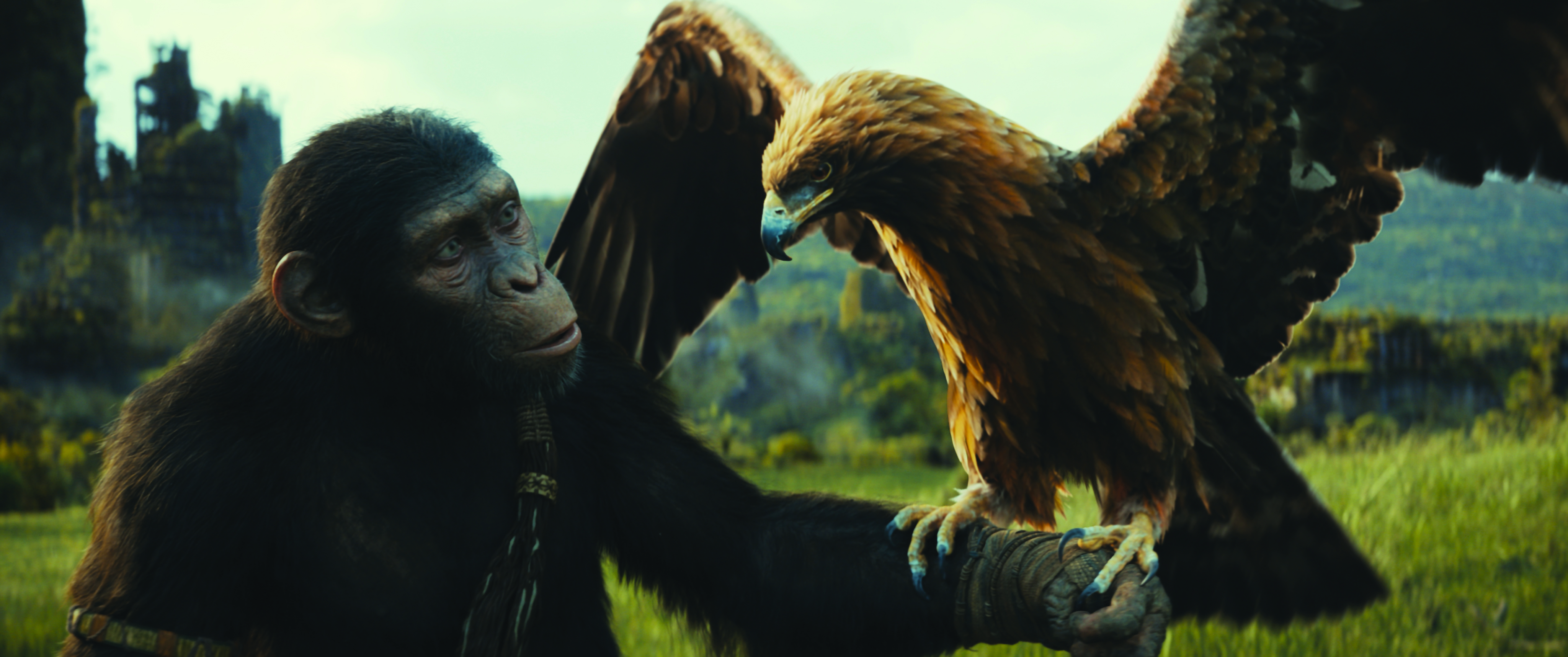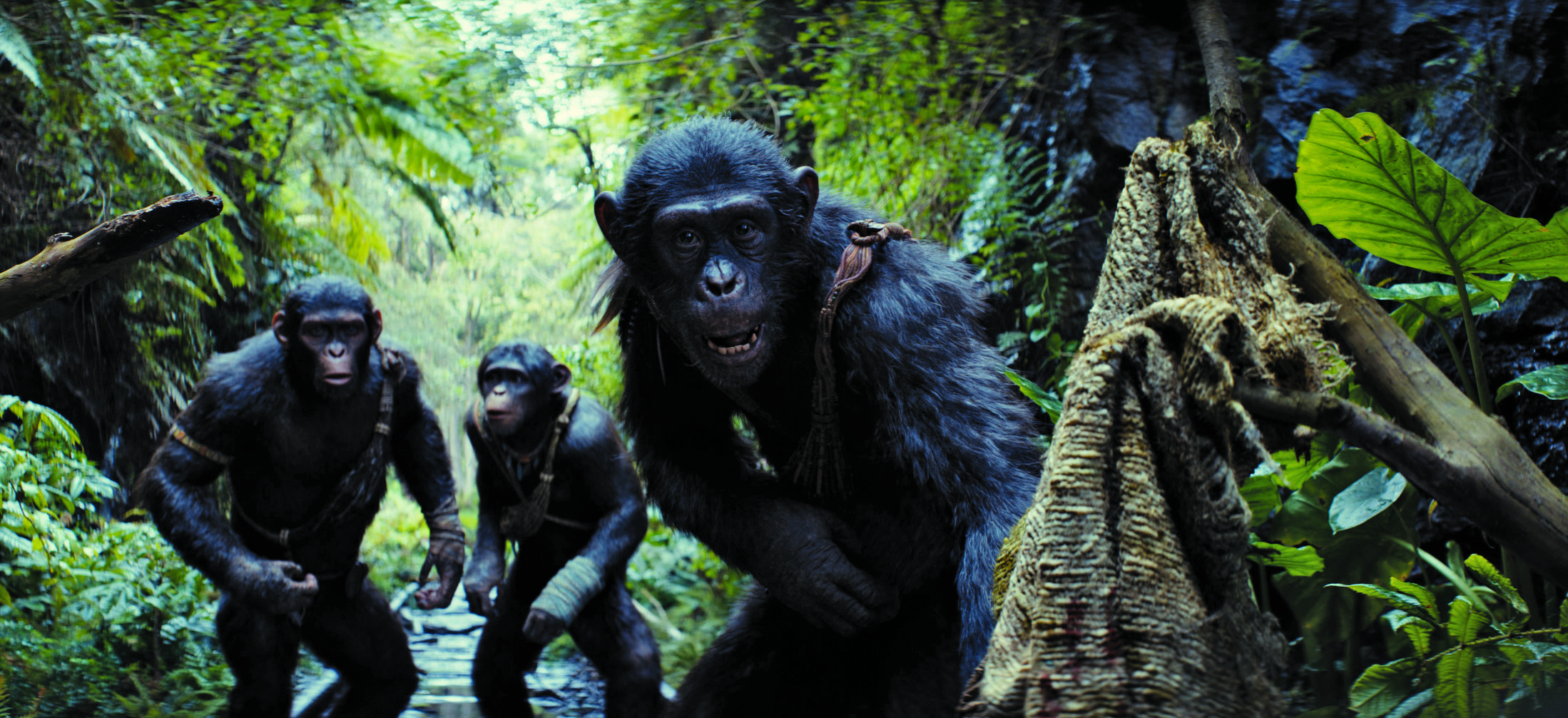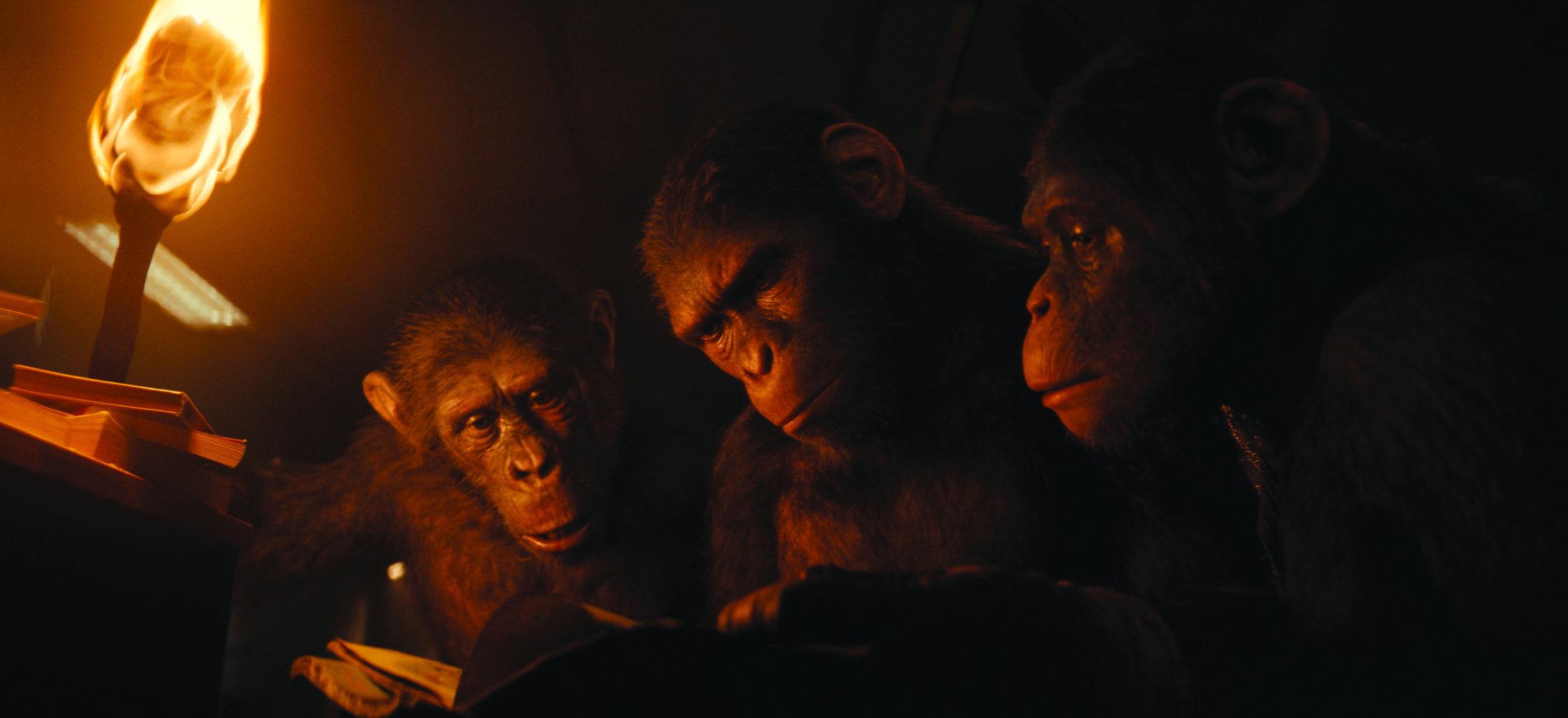
What was originally a novel called La Planète des singes in France and retitled Monkey Planet in the UK, Planet of the Apes has become a multimedia franchise based on the imagination of the French author Pierre Boulle, where the roles of humans and apes are reversed.
The latest entry, Kingdom of the Planet of the Apes, released in May as the first stop in a new trilogy that continues the story of simian takeover told during the rebooted universe’s previous three films, which swung into life with 2011’s Rise of the Planet of the Apes. (If you're inspired to kickstart your VFX career, check out our picks of the must-have resources for VFX artists).

"When I got the audition for Kingdom of the Planet of the Apes, I watched [the original] Planet of the Apes because my mum was like, ‘You have to see the first one’,” recalls Freya Allan, who portrays the mysterious human character called Mae. “It’s amazing how they did the prosthetics, but it’s a great story and film. I actually read the original book, which is very similar to that first film, but there were also the little pointers within our film, such as the human hunt, that make you think back to those original beginnings.”
Having to play out whole scenes with no one in front of you is definitely a far more intense process
Freya Allan, Mae
Visual effects are nothing new for Allan, who played Ciri in The Witcher series created by Netflix. “With The Witcher, I’m fighting against monsters that aren’t there, which is a lot easier because you learn your fight routine and basically execute your moves like a dance and act accordingly to the kind of moves,” she says. “That’s a lot easier than having to play out whole scenes with no one in front of you, which is definitely a far more intense process.”
Over the course of production on Kingdom of the Planet of the Apes, Allan was handed the nickname ‘Queen of the Clean Plate’. “I had a word with Freya at the outset because she’s almost the only human that we see who’s interacting with the apes,” explains visual effects supervisor Erik Winquist. “Obviously, for her the performance takes were imperative because they gave her that connection to the guys playing apes.

"Freya was an absolute trooper, being there by herself pretending she’s being tugged around by a gorilla or leading herself down the beach. In a lot of cases those are the takes that made it into the movie, and the fact she was able to replicate the emotional response she had in the performance takes was great. Freya is quite the athlete and there’s a lot of action. In only a couple of shots were we doing a face replacement or digital double. She’s really running, jumping and in the river so much of the time. It’s one less thing for us to do; the girl can run!”
Getting 1:1 mapping of a motion-capture performer with their digital primate counterpart wasn’t possible, as the contrasting physical attributes resulted in the intended emotion becoming lost in translation. However, some of the human physical and personality traits were incorporated into the character design of the apes.
“We’ve catapulted several hundred years into the future and along that evolutionary chain of intelligent apes. Their physiology still makes spoken speech not as easy as it for us, but that’s their primary form of communication now,” says Winquist. “It’s not sign language as in the previous films.

“When we were still shooting, we’d taken one of the lines of dialogue that we had from Owen Teague and applied it as a test for Wes Ball to show how that might play. We applied that to the facial puppet we had for Caesar, because we hadn’t actually built our characters at this point, to see that voice coming out of the ape. It gave Wes a level of comfort that this is actually going to work well. So much of that comes from the actor themselves in terms of how they speak. Our main orangutan Raka [Peter Macon] is a lot more of a chatterbox, so that was the big question there; he is going to be a beloved character.”
Ball first gained international recognition for helming The Maze Runner franchise, which was an entirely different experience than being responsible for producing the first installment of a new Planet of the Apes trilogy. “I have a new appreciation for what Matt Reeves and Rupert Wyatt did in those three prequel movies,” notes Ball. “I thought before, ‘This is going to be hard but cool.’ You get into it and it’s crazy. You have a performance that you’re cutting with and hopefully a camera that feels like that performance that you can cut with. Most of the cuts for me are not about performance so much, but camera moves.”

There are some full CG shots and sequences despite the emphasis placed upon location shooting in Australia. Ball adds: “It’s characters on a mocap stage with some witness cameras that give you a sense of a performance, but we have to completely invent everything. Hopefully no one will know and think we actually built some of the set and extended it.”
We’ve catapulted several hundred years into the future and along that evolutionary chain of intelligent apes
Eric Winquist, visual effects supervisor
Concept art helped to drive the narrative process. “I’d have one key image for every major narrative point where this feels like the movie,” Ball says. “You never exactly copy the concept images when you’re out on set, but it’s something that everyone can understand intuitively and unites all of us. There’s a lot of room for interpretation for words on the page, but when you have a great key image that represents what you have in your head, a lot of the work figures itself out.”
Rather than deal with a chrome or grey ball, a prosthetic ape head was kept on set. “I’d light people in a scene and would always get that head in front of the camera,” states cinematographer Gyula Pados. “It was a good reference for them later on to light in the same way.” An unknown was whether the apes would be too close to the camera. “You don’t want it to feel like a film for humans. It was a lot of research. I watched the previous films a lot of times to find what we found to be good or what might not be the best way to go. It was more about ‘is this shot going to work with apes here?’”

It was vital to break down the sharpness of the CG imagery. Pados adds: “How can I blend that with the real backgrounds? We talked about the LUT at the start and I found an old Agfa LUT. It’s different from a Kodak look; cooler in the shadows and warmer in the highlights.” The colours reflect the narrative journey. “At the beginning, in the village with the kids together, there’s a much warmer, friendlier look. But after that everything changes and we shift into cooler, darker tones.”
Getting the desired vegetative overgrowth was a hard part of the set dressing despite shooting out on location. “We have the human hunt and Wes wanted it similar to the original movie, where they ran through a cornfield, but we didn’t want corn as it’s too on the nose,” says production designer Daniel Dorrance. “We were looking for a five-foot wheatfield and couldn’t find all the right dynamics in our location boundaries, so we decided to grow one in the right environment, but never got there. It was terrible. We were expecting five-foot and they were two-foot. This was right after the holidays, so we had to scramble and find a wheatfield that got us somewhere close. In the end we had to change the background as it wasn’t what we were hoping for.”

Editor Dan Zimmerman recalls one particular scene that defined how the movie was cut. “There was one scene I was happy with and hasn’t changed all that much since the first time I cut it by myself and then with Wes,” he states. “It’s basically this big dinner scene with Proximus, our main antagonist.
You don’t want it to feel like a film for humans… It was more about ‘will this shot work with the apes here?
Gyula Pados, Cinematographer
Wes’s whole big thing is that he wanted everything to feel real. Imagine an awkward dinner scene with someone who’s not only telling you about this new world you may not have known, but is doing it in a way where you’re skeptical of how he’s going about his rise to power and makes you go, ‘Wait a minute. Are his intentions good or bad?’ It was the first time I was able to go, ‘I can take this performance and put it with that to create this, and put it into one shot and do that.’ That was the defining scene for how the rest of the movie was cut.
“The other thing was the detail orientation aspect. Two people are in a scene but there are more in the background. Not only do you have to pick those two, you have to go through all the takes of the background actors, specifically place each and figure out how it’s all populated so it actually feels like a shot; that was intense.”

This interview originally appeared in 3D World magazine, the world's leading digital art, CG and VFX magazine. 3D World is on sale in the UK, Europe, United States, Canada, Australia and more. Limited numbers of 3D World print editions are available for delivery from our online store (the shipping costs are included in all prices).







